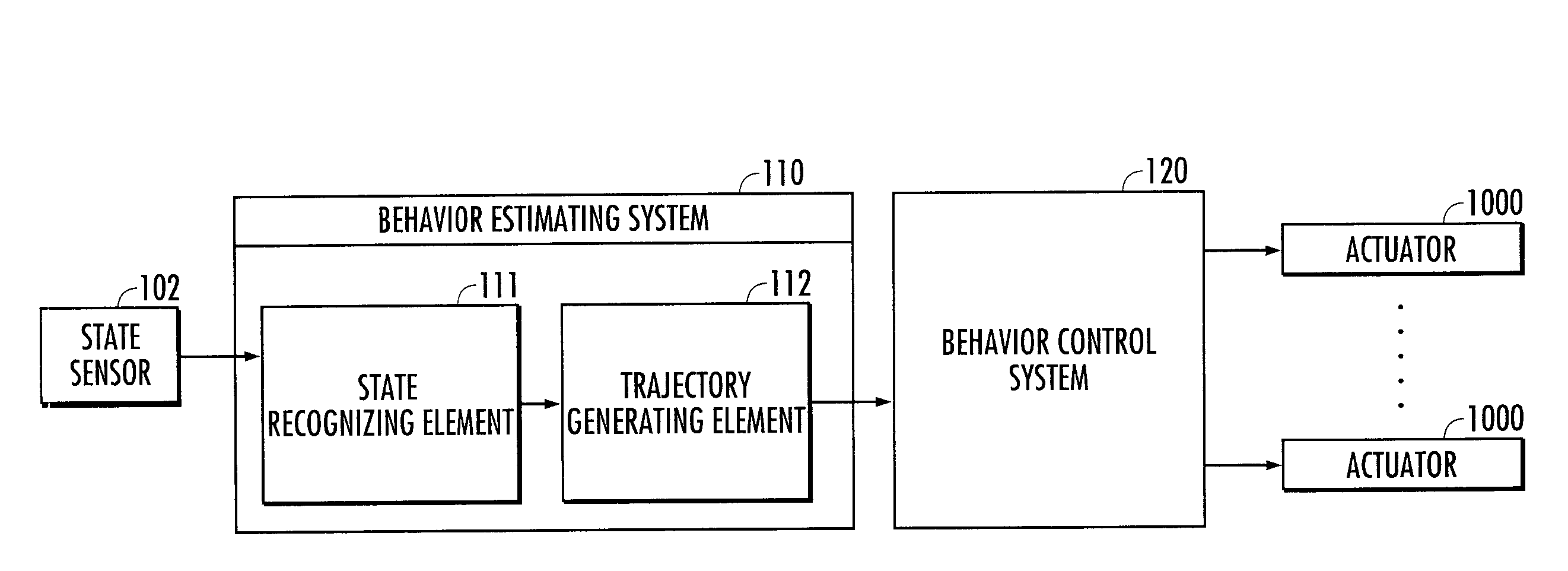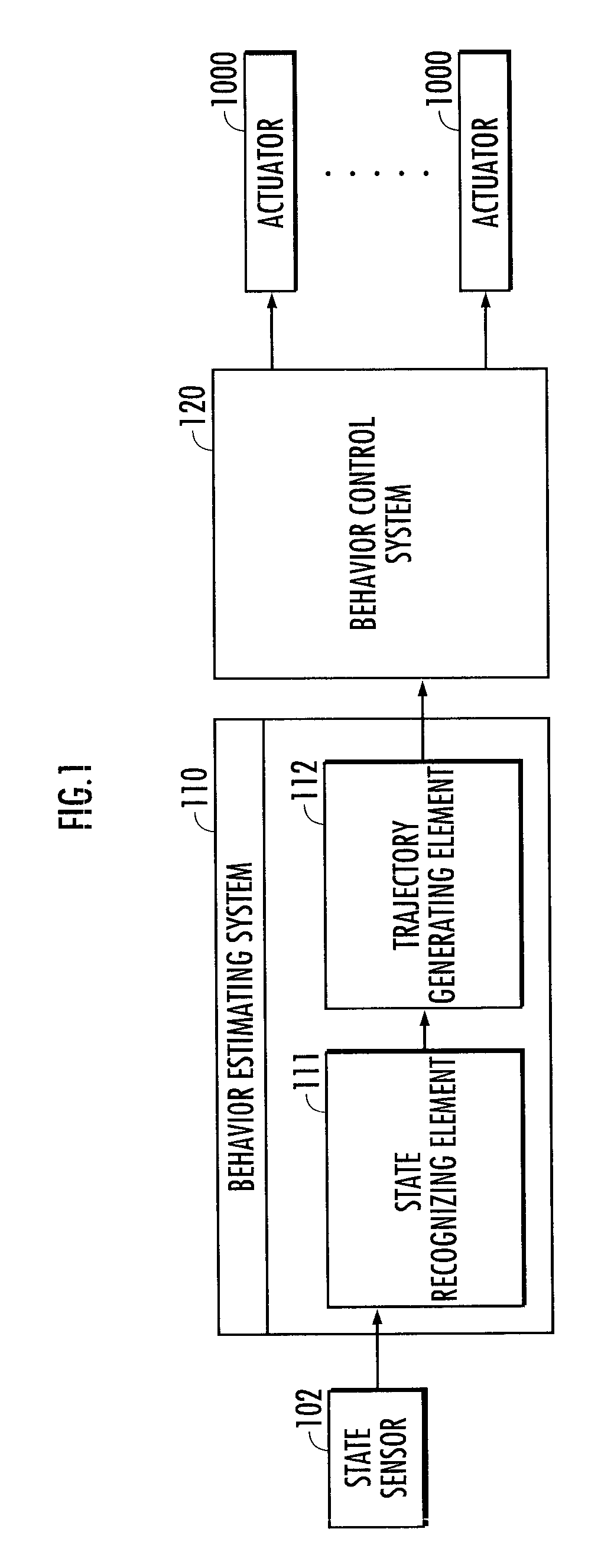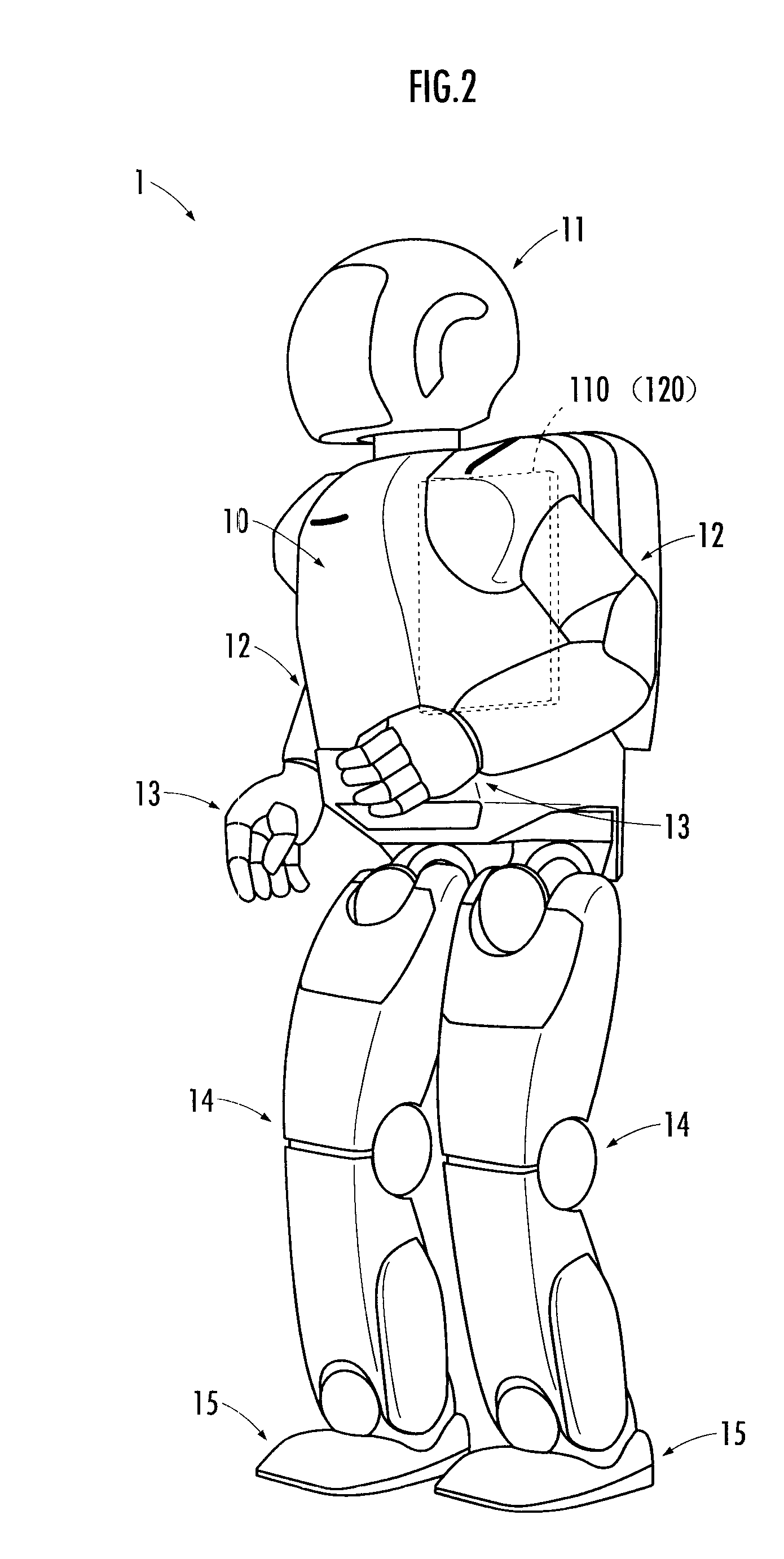Behavior estimating system
a behavior estimation and behavior technology, applied in the field of behavior estimation systems, can solve problems such as difficulty for agents to perform a specified task, and achieve the effects of improving estimation accuracy, reducing cumulative displacement, and high stability
- Summary
- Abstract
- Description
- Claims
- Application Information
AI Technical Summary
Benefits of technology
Problems solved by technology
Method used
Image
Examples
Embodiment Construction
[0032]The following will describe embodiments of a behavior estimating system in accordance with the present invention with reference to the accompanying drawings. First, the construction of the behavior estimating system will be described. A behavior estimating system 110 illustrated in FIG. 1 estimates the behavior manners of an instructor, such as a human being. A behavior control system 120 illustrated in FIG. 1 controls the behavior of a robot 1 by controlling the operations of actuators 1000 mounted in the robot 1 acting as an agent illustrated in FIG. 2 on the basis of estimation results provided by the behavior estimating system 110.
[0033]The robot 1 is a legged mobile robot and provided with a body 10, a head 11 mounted on the top of the body 10, right and left arms 12 extended from the right and left sides of an upper portion of the body 10, hands 13 provided at the distal ends of the arms 12, right and left legs 14 extended downward from the bottom of the body 10, and fee...
PUM
 Login to View More
Login to View More Abstract
Description
Claims
Application Information
 Login to View More
Login to View More - R&D
- Intellectual Property
- Life Sciences
- Materials
- Tech Scout
- Unparalleled Data Quality
- Higher Quality Content
- 60% Fewer Hallucinations
Browse by: Latest US Patents, China's latest patents, Technical Efficacy Thesaurus, Application Domain, Technology Topic, Popular Technical Reports.
© 2025 PatSnap. All rights reserved.Legal|Privacy policy|Modern Slavery Act Transparency Statement|Sitemap|About US| Contact US: help@patsnap.com



